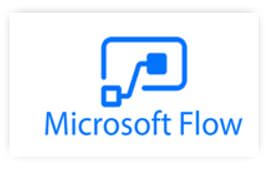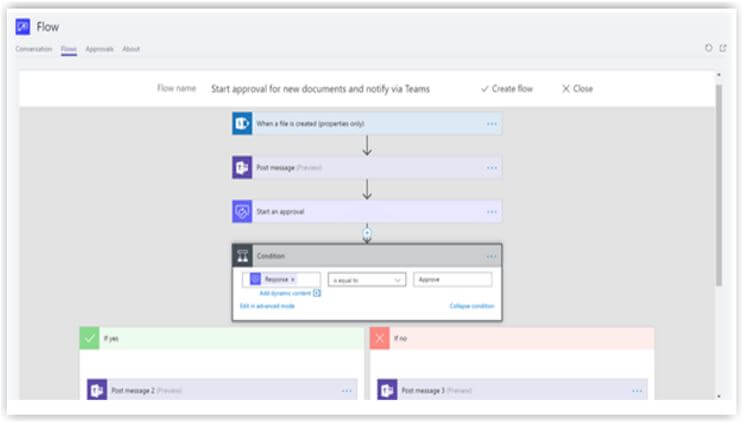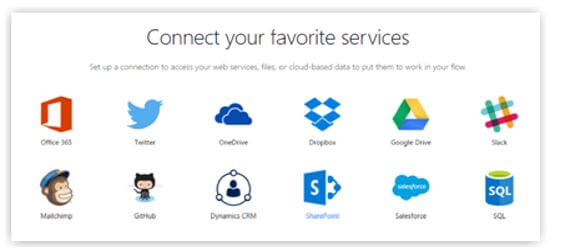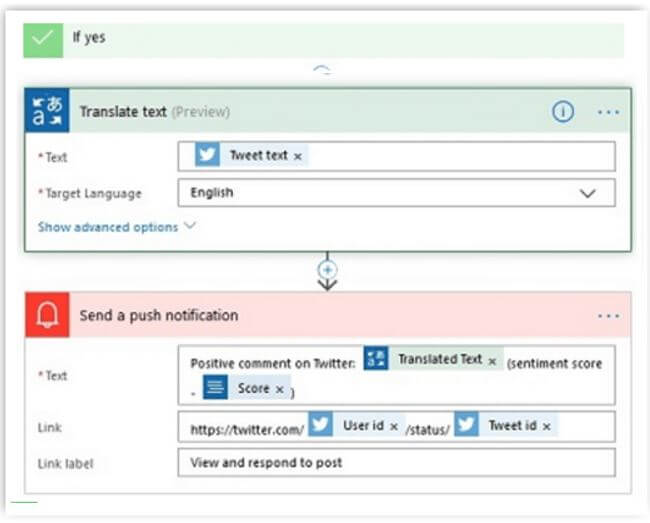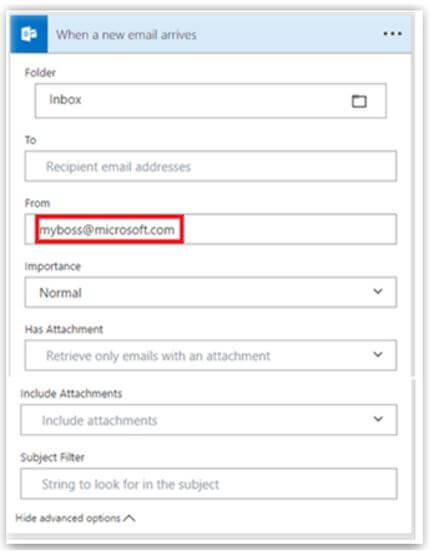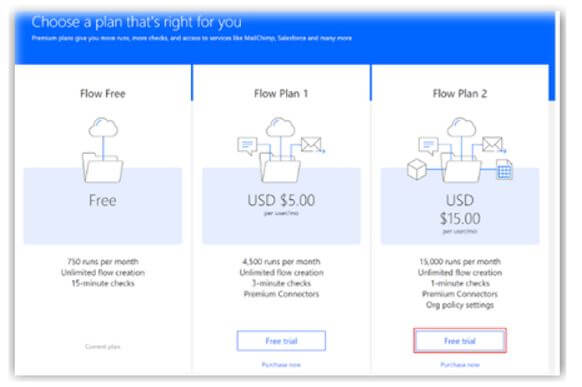Updated February 14, 2023
Introduction to Microsoft Flow
Microsoft Flow is the Cloud-Based Software that enables employees to build and automates workflows and jobs from various services and applications without anybody’s help and it is called Power Automate. The automated or programmed workflows are generally termed Flows. To generate the flow, the users only decide what actions must occur when a particular event occurs. Mainly the flow is used for trigger notifications.
How to Use Microsoft Flow?
Mainly Microsoft Flow is used to trigger the notifications. For example, suppose a new person is added to the Microsoft CRM. In that case, the programmed workflow sends the sales representatives an email or text message with the information about the person.
It automates the entire thing from the push notifications and can also be used to copy the files. Consider if a file is added to OneDrive or Dropbox for business purposes; an automated workflow can immediately forward the copy of the file to SharePoint. It is used to collect the data. For example, let’s consider which customer is required to view what a person says about the specific product so that they can trigger that will confine new tweets which refer to the product and set that copy of each tweet in the SQL Database for Sentiment Mining.
For example, the flow works in workspace teams like a flow with the team’s conversation. One lead in the team sends the messages to the desired member to flag the concern, or they can log the concerns in a spreadsheet. Like the way, the flow bot will work in the team.
Features and Alternatives
Microsoft Flow is used not only to integrate Microsoft Products but also for several apps and services that as Microsoft Calls Connectors. It includes Salesforce, Google Drive, Skype, Twitter, SQL Server, etc. The Connectors is a proxy that allows the services to connect to Microsoft Flow and for PowerApps and Azure Logic Apps in the cloud.
Let’s see the features; the user takes advantage of an extensive library of pre-built flows and which are also called templates.
- To store Gmail attachments to OneDrive.
- Send an email to any audience while the power BI alert is triggered.
- To copy the SharePoint listing to CSV every week.
- To store the tweets, which includes a hashtag to the list of SharePoint?
- To get the trigger notifications while you receive an email from the boss.
It is intended to design for non-technical staff; also, they can automate workflows without anybody’s help. Microsoft Flow Admin Center enables the administrator to handle the users, roles, and permission to ensure that the flows of the employee-created act follow data loss prevention policies.
Let’s see the Alternatives to Microsoft Flow – The alternative to Microsoft Flow are numerous no-code tools that connect the applications and computerizes the business solution, and automate office process and tasks; they are as follows:
- IFTTT
- Zapier
Microsoft Flow Benefits
Microsoft Flow is a Cloud-Based Software that facilitates employees to build automated workflows. The automated workflows are called Flows. On the whole, the flow is used for trigger notifications. Once the flow is developed, it will be controlled on the desktop or the application on a Mobile device. The flow is integrated with various services and Microsoft applications, including Power BI, PowerApps, Office 365, and Dynamics 365.
Any person can use Microsoft Flow, which is integrated into the 365 Microsoft Office Package; it automates recurring tasks, simplifies their execution on employees, and offers additional advantages; let’s see the benefits of Microsoft Flow.
1. Easy Integration with Other Applications – Connectors
The trigger-based tools enable you to integrate workflows directly into several applications, which we use with the help of Connectors. The connector is the tool that associates more applications; like this method, you can automate processes between them and simplify daily menial tasks. However, let’s see that few connectors are available for premium users.
2. Easy to Share & Access Business Data
It is used to connect your applications to create the flow between them. For example, let’s use the flow to copy data from one application to another automatically. This way, the other users can share easily and access the data across various web applications. Consider one example: connecting Sharepoint to Outlook – whenever the other workers send a file via email. In contrast, the software automatically triggers the flow, which shares a similar file on your SharePoint. Let’s see the significant connectors that the Microsoft Flows contain.
3. Option to Create Custom Connectors
Microsoft Flow enables the users to build custom connectors; to do this process, one has to define the APIs to connect. Let’s consider one example to link Twitter to your Microsoft Flow. To do this, we need to automate the process between the two.
4. Prioritize Tasks for Employee
It is expected to miss an online mail of high importance, especially for receiving more than 200 emails daily, leading to significant issues. Using Microsoft Flow, you can automate the flow and design template where users will receive high-priority email when it arrives; it is done through the integration flow into the configuration flow and outlook. Let’s consider one example to automate an alert notification each time an email comes from some user with high authority; let’s assume one employee sends you a vital research analysis on a new product entry that your business is preparing.
5. Selection of Plans
Microsoft flow offers three types of plans they are as follows:
- Free of charge, one
- $5/ month plan
- $ 15/ month for one
You can first try the free trial and choose whether Microsoft Flow is a high-quality tool for your business.
Conclusion
In this article, we have seen Microsoft Flow, an automated employee-process tool. It helps get the best outcomes and ease of access to employee management.
Recommended Articles
This is a guide to Microsoft Flow. Here we discuss the introduction and how to use Microsoft flow. Features and alternatives, benefits. You may also have a look at the following articles to learn more –

